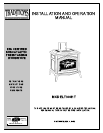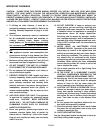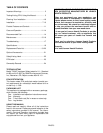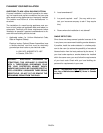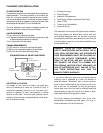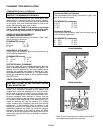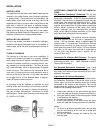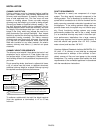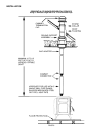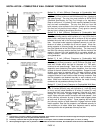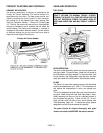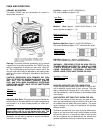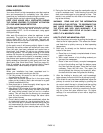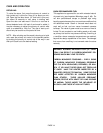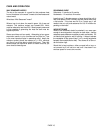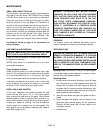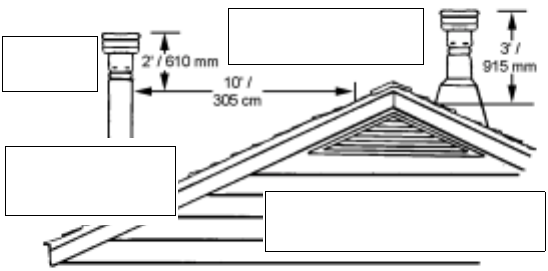
INSTALLATION
PAGE 8
CHIMNEY INSPECTION
Existing chimneys must be inspected before installing
your stove. Consult your local building department for
chimney code requirements. A masonry chimney must
have a code approved liner. This liner must not have
broken or missing pieces. Some non-code masonry
chimneys may be brought up to code by being relined.
(Consult your dealer or qualified chimney sweep). Fac-
tory built chimneys should also be inspected, first for
creosote deposits (which should be removed), and then
for integrity of the stainless steel liner. Look for obvious
bulges in the lining, which may indicate the need to re-
place that section (use a bright flashlight). Also, inspect
the attic to see that the chimney has proper clearance to
combustible framing members. For interior masonry
chimneys and most factory built chimneys, this must be
a (2) two-inch air space clearance, which must not be
filled with insulation or any other material. An exterior
masonry chimney must have a (1) one-inch air space
clearance.
CHIMNEY HEIGHT REQUIREMENTS
The chimney must extend 3 feet above the level of roof
penetration and a minimum of 2 feet higher than any
roof surface within 10 feet (see below). Check with your
local building officials for any additional requirements for
your area.
Due to prevailing winds, local terrain, adjacent tall trees,
a hill, or ravine near the home, or adjacent structures,
additional chimney height or a special chimney cap may
be required to ensure optimum performance.
To achieve a stable draft, the total flue height required
(from the appliance to termination) is 12 to 15 feet
minimum.
DRAFT REQUIREMENTS
The appliance is merely one component of a larger
system. The other equally important component is the
venting system. This is necessary for achieving the re-
quired flow of combustion air to the fire chamber and for
safely removing unwanted combustion byproducts from
the appliance. If the venting system's design does not
promote these ends, the system may not function prop-
erly. Poorly functioning venting systems may create
performance problems as well as be a safety hazard
(i.e. an oversized chimney may result in less than opti-
mum performance. Installations into a large, masonry
chimney may require a liner to improve performance). A
draft test should read greater than .04' W.C. (inches
water column) and less than .08" W.C.
American National Standards Institute ANSI/NFPA 211-
92, draft 1-7: A chimney or vent shall be so designed
and constructed to develop a flow sufficient to com-
pletely remove all flue and vent gases to the outside
atmosphere. The venting system shall satisfy the draft
requirements of the connected appliance in accordance
with the manufacturer instructions.
Top of the flue must be 3’ (915
mm) higher than highest point
of roof penetration
Top of the flue must be
2’ (610 mm) higher than
any part of roof within
10’ (305 cm) horizontal
These rules are minimums. In some
instances, chimney height may need to
be increased to achieve sufficient draft.
Requires a
listed termi-
nation cap



